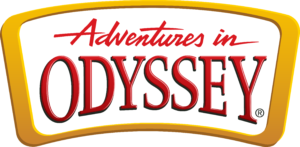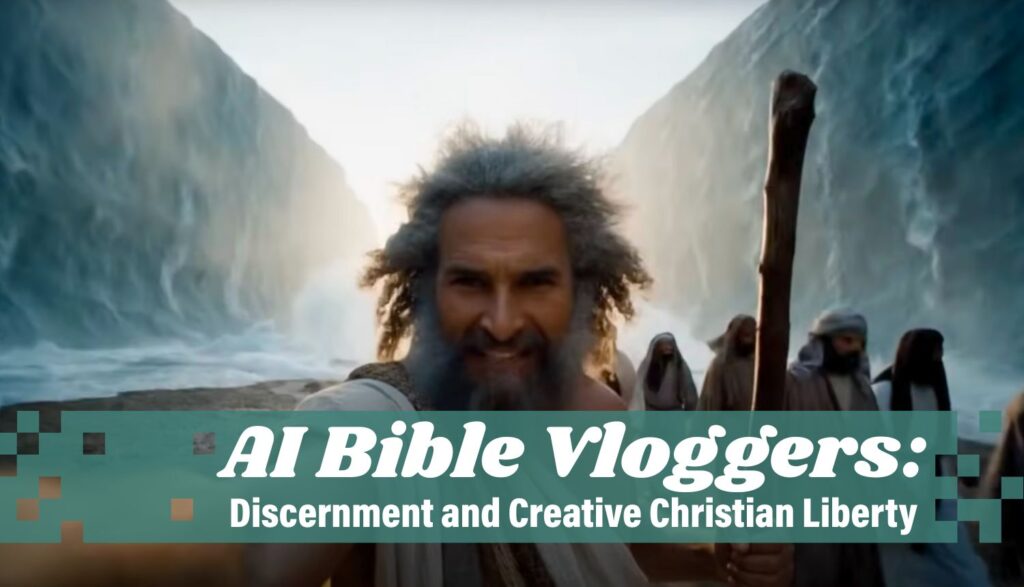If you tuned in to Episode 279 of The Plugged In Show (or if you want to go back and listen now), then you’re probably aware that I’m rather conflicted when it comes to the hit Christian series The Chosen. But before you sharpen your pitchforks, let me explain what I mean.
On the one hand, I disagree with some creative liberties taken in the show; I don’t always agree with the ways Jesus and the disciples are depicted. I wouldn’t call myself an iconoclast regarding depictions of Jesus, but I am sympathetic to the concerns. And I’m wary that some fans, so fervent in their love of the series, revere and defend the show far more than they ever would the source material.
But on the other hand, for all the scenes that I dislike, I’ve also watched some that have deepened my understanding of the biblical moment: I think the show wonderfully handles John 4’s account of the Samaritan woman at the well. I’ve likewise witnessed the show act as a catalyst that spurs people on to read the Scriptures for themselves. And it’s apparent that The Chosen is perhaps one of the only times a nonbeliever will want to actively engage with biblically-based content.
The core of my confliction comes from the balance between holy reverence of God in the things He has expressly revealed about Himself and a Christian narrative’s creative liberties for the sake of the gospel. And honestly, that tension can make me feel like a ball in a ping pong match between the regulative and normative principles of worship.
It is evident in Scripture that there are improper ways to offer worship to the Lord (Paul’s letter to the Corinthians makes that clear). It’s also clear that God desires mercy over sacrifice (Hosea 6:6). To condemn all creative liberties in Christian content risks becoming legalistic and pharisaical; to allow them all risks becoming worldly and irreverent.
Where we draw the line between strict-letter reverence and artistic liberty looks different for all of us, influenced by our upbringings, denominations and personal discernment. Romans 14 reminds us that there should be grace in drawing that line on disputed issues. But it’s a line that we each draw regardless. And it’s one I’d like you to consider as I unpack social media’s latest trend: AI-generated Bible characters.
AI Bible Vloggers
You may have already come across these videos, wherein AI-generated biblical figures vlog about their experiences: Moses speaks into his iPhone while walking through the Red Sea; David tells viewers how he’s about to sling a rock at Goliath; Joseph brags to the camera about his multi-colored robes while his brothers angrily stare at him from behind. Some even depict Jesus, and all of them speak in social media/streamer slang.
“Yo, fam, they don’t know that G.O.D. is about to B.R.B.,” a smiling Jesus says to viewers while nailed to the cross.
I’m not nearly as put off by the AI recreations of Moses, David and Joseph. However, hearing my Lord speak like that makes me uncomfortable. It sounds irreverent. Disrespectful, even. And it seems to belittle the importance of the crucifixion—arguably the universe’s most important moment in history.
For that matter, I don’t think the majority of these videos are meant to be reverent. Who knows if the people uploading them even profess Christianity? It’s pretty apparent that the primary purpose is, quite simply, to be funny. There’s little other reason to place David before the camera expressing how “ya boy” is about to “yeet this stone at Goliath and see what happens.”
I’d argue, however, that my feelings on these things remain mere disagreements with creative liberty. I happen to draw my line closer to reverence than these creators do. Technically, my complaints about the colloquialisms of these AI-generated characters falls somewhere in the same category as preferences in Bible translation. And although I personally wouldn’t use AI to make something like this, I don’t feel it is my right to deny someone else that ability either.
That’s why I’d like to take a step deeper into this discussion: Because AI-generated Bible stories can go beyond mere creative differences.
Keeping the Truth True
Throughout history, as human technology has progressed, the telling of the biblical story has adapted. It’s been passed down orally, in text, in recorded audio, in live-action video and in animation. AI generation is simply the latest medium of storytelling to which Christians have been asked to adapt. However, regardless of which medium we use (even if it’s generated by AI), it is a Christian’s purpose to worship God and bear witness to the Truth He has revealed to us.
Pastor, theologian and YouTuber Gavin Ortlund recently used this topic to speak into the church’s age-old debate on iconoclasm. Within that video, he also warned that while these AI depictions of Jesus can teach theology, they might not always accurately portray the character of our Lord or the gospel message—even if they were made with well-meaning intentions.
“Even in other depictions that are intended to be serious and can have didactic, teaching value, there’s a danger here of simply distorting the personality of Christ as it’s portrayed in the gospels,” Ortlund said. “And this is a real issue because this is shaping our imagination. This is a subtle form of theology, and we need to be careful here about losing the fierceness and majesty of Christ.”
Now, some of these creations may accurately express the gospel. But others might only offer half-truths. Still, some could even contain total falsehoods that may influence viewers’ understanding of who God is. At that point, the issue becomes not one of balancing reverence with creative Christian liberty but rather one of blasphemy.
In that situation, such a depiction would fall outside the Christian sphere and should be rejected.
But sometimes, I think we can have a tendency to conflate issues of creative liberty into issues of Christian heresy—a tendency to make our line between reverence and non-blasphemous creative differences into the line between Christianity and paganism, claiming that which goes beyond our line must be heretical. In our zeal to defend the faith, we end up making bigger deals out of mere creative differences than they are, ultimately creating an unnecessary stumbling block for those interested in the faith. I know that I have been guilty of this in the past, and so I’d like to offer a word of both caution and comfort on this point.
Drawing Your Line while Maintaining Grace
If you’re a bit like me and tend to skeptically examine every form of Christian media, I first want to encourage you in your discernment. It is good to be zealous for the Lord, and that concern is evidence of your desire to serve Him in the way He loves most.
But I also want to encourage you to think beyond where you’ve drawn your line between reverence and creative liberty, where we may find evangelistic opportunity:
As Ortlund points out later in his video, these AI creations speak to the rise in interest our culture—particularly younger generations—has in religion. AI vloggers and shows such as The Chosen or House of David have become cultural touchpoints through which we’ll find many people looking to engage in Truth.
Even if we believe the content itself is skewed, these shows and AI characters could still share some important messages from the Bible: Jonah: A VeggieTales Movie depicted Ninevites as vegetables who smacked one another with fish. I have never been there, but I assume that is historically false; I still got the overall point of the story.
There’s a hunger for a greater truth in our culture, and people are lining up at the buffet of Christian content to find it. But though we, as seasoned diners, may have our preferences on which food is best and which is not, we must remember that many others are walking into that buffet for the very first time.
Therefore, we need to be careful that, in lamenting that an item on the buffet isn’t cooked to our liking, we don’t discourage the first-time customer from sampling any of the food at all.
I have my convictions, my line, on which Christian media is worthwhile and which media goes too far—or perhaps doesn’t go far enough. I personally wouldn’t load up my buffet tray with AI Bible content. But I also must not allow a matter of conscience to become a stumbling block to the one searching for the truth (Romans 14).
In other words, if it’s not an essential doctrine of truth as highlighted earlier, we shouldn’t let our drawn lines prevent us from engaging with people who are curious about biblical content, lest we miss potential gospel conversations—even if they begin with some uncanny AI-generated Bible characters.





3 Responses
Personally, I believe that depictions of Jesus or of God are violations of the second commandment (Exodus 20:4 “You shall not make for yourself a carved image, or any likeness of anything that is in heaven above, or that is in the earth beneath, or that is in the water under the earth.”). I know there are disputes about this , but I, and my church, hold these beliefs and don’t use any sort of visual representations of Jesus.
I have heard other people say this before. Does it include audio Bibles since the actors have to choose how to say Jesus’ words?
I have enjoyed Bible plays, but I felt The Chosen was creating too much extra biblical content for me to enjoy. It’s odd because I have been wrestling with feeling like I’m supposed to illustrate a word for word adaption of The Gospel of John for the last ten years. I feel illustration can depict how life was in first century Israel and bring context, but I worry since I do not know koine Greek. I also grew up in a traditional church where women could not teach men so I worry about illustrating the Bible since I’m a woman.
My coworker told me that he thinks I should do the illustrations as a personal Bible study first, which I think is less nerve wracking but I do feel nervous about it. I’ve made sketches but not any finished pages.
I like reading your thoughts on this and feel that the motive behind the teaching videos is important. AI channels have not appealed to me so far. I think it is because they are so unpersonalized and because I do like to draw and think AI art is mostly plagiarism. I’ve also seen fake channels such as this one creating fake monologues by C.S. Lewis to scare people about “cursed objects” and that “your friends are hidden witches.”. It’s very annoying because they’ve copied his style of speech and it is tricking people.